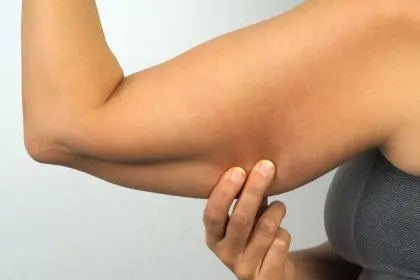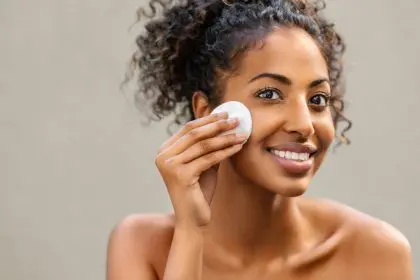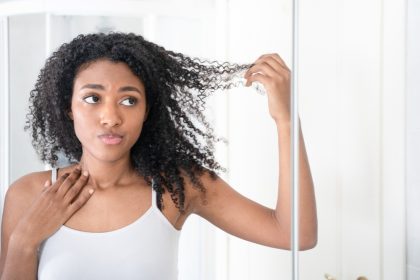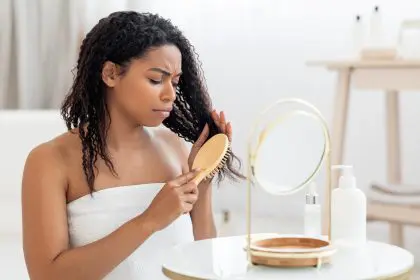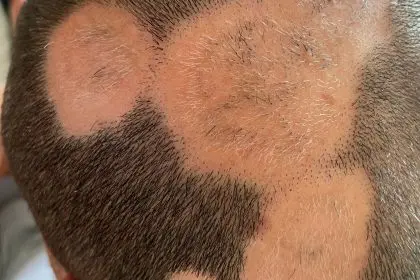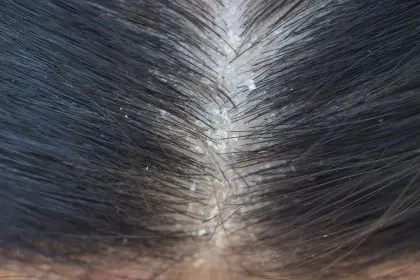The connection between omega-3 fatty acids and hair health has emerged as a fascinating area of scientific research, offering new insights into natural approaches to hair vitality. While these essential fats have long been recognized for their role in cardiovascular and cognitive health, their impact on hair growth and maintenance presents compelling possibilities for those seeking to enhance their hair’s condition naturally.
Understanding the omega-3 family
These essential fatty acids comprise three main types, each playing distinct roles in human health:
- DHA (docosahexaenoic acid): Primarily found in marine sources
- EPA (eicosapentaenoic acid): Also derived from seafood
- ALA (alpha-linolenic acid): Available in plant-based sources
The science behind hair growth
Hair health depends on multiple biological factors:
- Follicle nutrition
- Blood circulation
- Hormone balance
- Inflammatory responses
- Cellular regeneration
Omega-3 fatty acids influence each of these aspects through various biochemical pathways, potentially supporting optimal hair growth conditions.
Inflammation and hair health
The anti-inflammatory properties of omega-3s play a crucial role in maintaining scalp health:
- Reducing scalp inflammation
- Minimizing follicle damage
- Supporting healing processes
- Protecting against oxidative stress
- Maintaining skin barrier function
Circulation enhancement effects
Improved blood flow to hair follicles can enhance growth and maintenance:
- Enhanced nutrient delivery
- Better oxygen supply
- Increased waste removal
- Optimal hormone distribution
- Improved cellular metabolism
Structural support mechanisms
Omega-3s contribute to hair structure and strength:
- Supporting protein synthesis
- Enhancing membrane flexibility
- Improving moisture retention
- Strengthening hair shaft integrity
- Reducing brittleness
Hormonal balance influence
These fatty acids can impact hormone-related hair issues:
- Supporting endocrine function
- Moderating stress responses
- Balancing oil production
- Regulating growth cycles
- Minimizing hormone-related hair loss
Optimal sourcing strategies
Incorporating omega-3s through diet requires strategic food choices:
Marine sources:
- Wild-caught salmon
- Atlantic mackerel
- Sardines
- Herring
- Anchovies
Plant-based options:
- Flaxseeds
- Chia seeds
- Walnuts
- Hemp seeds
- Algae supplements
Supplementation considerations
When choosing supplements, several factors warrant attention:
- Source quality
- Processing methods
- Concentration levels
- Preservation techniques
- Third-party testing
Dosage and timing guidelines
Effective supplementation requires careful attention to dosing:
Daily recommendations:
- General health: 250-500mg combined EPA and DHA
- Hair health support: 1-2g total omega-3s
- Maximum safe intake: 3g daily
- Timing: With meals containing healthy fats
- Duration: Minimum 6 months for visible results
Integration with hair care routines
Maximizing benefits requires a comprehensive approach:
- Consistent supplementation
- Balanced nutrition
- Proper hair care practices
- Stress management
- Adequate hydration
Safety and precautions
While generally safe, certain considerations merit attention:
- Blood-thinning effects
- Seafood allergies
- Digestive sensitivities
- Medication interactions
- Quality control importance
Supporting lifestyle factors
Optimal results require attention to complementary factors:
- Balanced protein intake
- Adequate vitamin D levels
- Regular exercise
- Stress reduction
- Quality sleep
Monitoring progress and results
Tracking improvements helps optimize the approach:
- Monthly hair measurements
- Photography documentation
- Texture assessment
- Shedding monitoring
- Scalp condition evaluation
Future research directions
Ongoing studies continue to explore:
- Optimal dosage levels
- Delivery methods
- Combination treatments
- Genetic factors
- Long-term effects
The relationship between omega-3 fatty acids and hair health represents a promising avenue for natural hair care enhancement, capturing the attention of both researchers and individuals seeking effective ways to nurture their locks. While individual results may vary, the scientific evidence suggests that adequate omega-3 intake can support overall hair health through multiple mechanisms, making it an essential component of a comprehensive hair care regimen.
Omega-3 fatty acids play a critical role in promoting healthy hair growth by nourishing the hair follicles. These healthy fats improve blood circulation in the scalp, ensuring that hair follicles receive the necessary nutrients and oxygen required for optimal growth. Furthermore, omega-3s possess anti-inflammatory properties that can help reduce scalp irritation and inflammation, which are often underlying factors in hair thinning and loss.
Incorporating omega-3s into one’s diet can be achieved through various sources, including fatty fish such as salmon, mackerel, and sardines, as well as plant-based options like flaxseeds, chia seeds, and walnuts. For those who may struggle to obtain sufficient omega-3s through food alone, supplementation can serve as an effective alternative. Fish oil and algae-based supplements are popular options that can help individuals meet their omega-3 requirements and support their hair health goals.
Understanding these connections enables individuals to make informed decisions about incorporating omega-3s into their hair care regimen. By being mindful of their dietary choices and considering supplements when necessary, individuals can enhance their hair’s health and vitality.
Moreover, adopting a comprehensive approach to hair health that includes omega-3 supplementation offers a natural strategy for those seeking to improve their hair’s condition. This holistic method should also encompass proper nutrition, hydration, and suitable hair care practices, such as gentle washing and conditioning. Combining these elements can create an environment conducive to healthy hair and scalp.
In conclusion, omega-3 fatty acids can be a valuable ally in the quest for beautiful, vibrant hair. By understanding their role and integrating them into daily routines, individuals can take proactive steps toward achieving and maintaining healthy hair and scalp, ensuring that their hair remains not only visually appealing but also strong and resilient.



